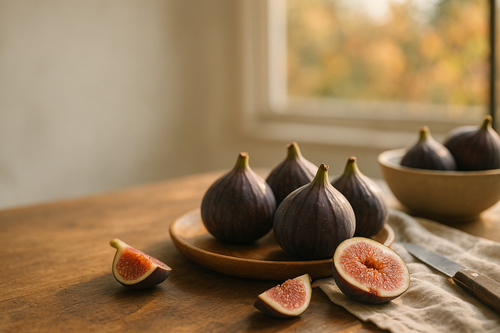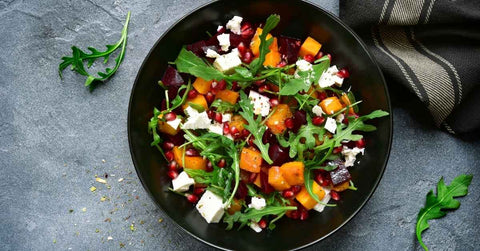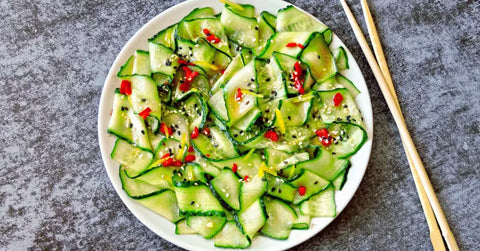
Updated: August 9, 2025 • Eight minute read
The smart fridge arrives in the kitchen
Imagine: you open your fridge, it knows what's inside, suggests an anti-waste recipe, orders milk if it's running low, and warns you of an approaching expiration date. Science fiction? Not really! The smart fridge has left the labs and made its way into our kitchens. Thanks to AI, connected sensors, and user-friendly apps, it's slowly revolutionizing our habits. The goal? Eat better, throw away less, save time, and manage your diet like a chef 🍳.
It's not just about gadgets: the future of food is happening here, at the crossroads of everyday technology, ecological issues and new culinary expectations. We're already seeing it with the rise of air fryers , the explosion of smoothie blenders or the digitalization of the barbecue for the summer 🔥. But the real upheaval may be this fridge that's learning to think... for you!
What these clever objects will change for you
The heart of the smart fridge is its ability to support you every day. Thanks to a battery of sensors, integrated scales, and sometimes even internal cameras, it takes inventory of your products. No more yogurts left at the bottom or butter bought three times—your fridge warns you before it runs out or goes to waste. Some models offer recipes tailored to what you actually have on hand, and even calculate the nutritional values of your meal 🥗.
Artificial intelligence doesn't stop there: it learns your routines, detects your preferences, and can even suggest you replenish a key ingredient. Internet connectivity opens the door to automatic delivery, synchronization with your meal planner, or the integration of your health data (allergies, dietary goals, etc.). The most advanced ones communicate with other devices: imagine an air fryer that starts cooking as soon as you take the chicken out of the fridge, or a blender that boosts its smoothie program based on the detected freshness of the fruit.
Beyond being a gadget, this technology aims to simplify your life. No more paper shopping lists: your fridge generates them and shares them on your smartphone. On the go, you can check with a click if you still have parmesan or if it's time to restock on vegetables. For families, it's also an anti-conflict ally: everyone can add or reserve a food item, or even receive a notification if there's a slice of dessert left. Practical, right?
Budget, savings and price questions
Let's not kid ourselves: a smart fridge costs more than its "traditional" counterpart. But the investment is explained by the savings generated over time. First, the reduction of waste: according to several studies, nearly a third of our food purchases end up in the trash due to forgetfulness or poor storage. By helping you better manage your inventory, your smart fridge can significantly reduce your weekly bill.
When it comes to power consumption, manufacturers are now optimizing energy efficiency, even with all these sensors. Some models adjust the cooling in real time based on load or weather, reducing energy consumption peaks. You should also consider promotions and purchase bonuses, sometimes available through ecological transition programs. Is it cost-effective? If you cook regularly and are concerned about waste, the answer is often yes, especially if you combine your smart fridge with other smart appliances (ovens, scales, food processors, etc.).
Finally, the trend is accelerating: prices are falling over the generations, and features are becoming richer. We're expecting "light" versions for less than €500 soon, affordable for families or students. It's just a matter of choosing the right model for your needs, without being seduced by unnecessary hype.
Tips for taking advantage of power technologies
Don't have a smart fridge (yet)? Don't panic, there are plenty of tips to take advantage of the progress without changing everything! Start by downloading an inventory app: scan your products at the fridge entrance, and that's already a first step towards digital management. Some gadgets plug into the shelves and "smarten" a traditional fridge, adding alerts and expiration date notifications.
Also consider connecting your appliances: modern blenders and food processors sometimes connect to your smartphone to receive personalized recipes based on your inventory. To optimize storage, prioritize cold zones for fragile foods, and don't hesitate to use transparent containers to see at a glance what's missing. Finally, adopt the "anti-waste weekend" routine: once a week, cook a dish that empties the fridge, in creative mode. Your budget will thank you, and so will the planet!
Frequently asked questions about the smart fridge
Is it complicated to install or use?
Not at all! Recent models are designed to be plug & play: you plug in, connect to Wi-Fi, and an app guides you through scanning or entering your first products. The interface is often fun, perfect even for beginners.
Is my privacy protected?
Most reputable brands encrypt data and let you choose whether or not to enable cloud connectivity. Internal cameras only film the interior, and you can disable connected features if you prefer a more "local" experience.
Is it reserved for cooking enthusiasts?
Not at all: even if you cook infrequently, a smart fridge helps you avoid buying double, keep track of expiration dates, and save time. Families, roommates, and students will quickly find it useful.
Do you have to change everything to take advantage of new features?
No! Many smart devices and smart devices (scales, cameras, apps) can be adapted to a standard fridge. The important thing is to start small, depending on your budget and your preferences.











Comments (0)
There are no comments for this article. Be the first one to leave a message!